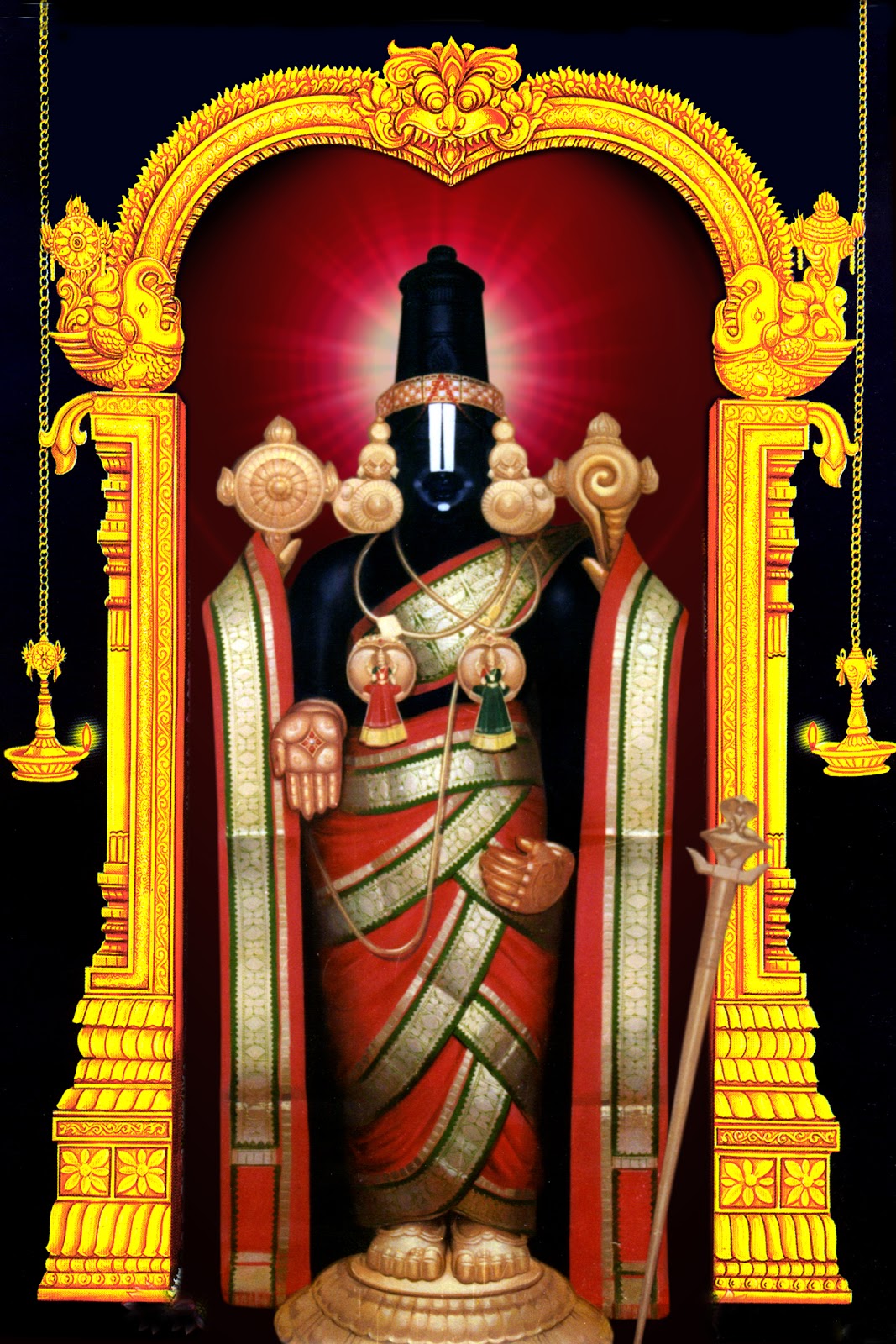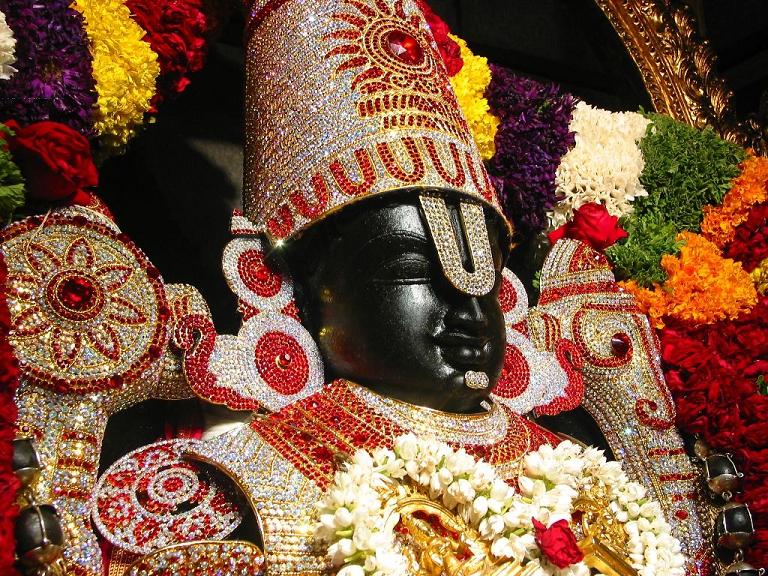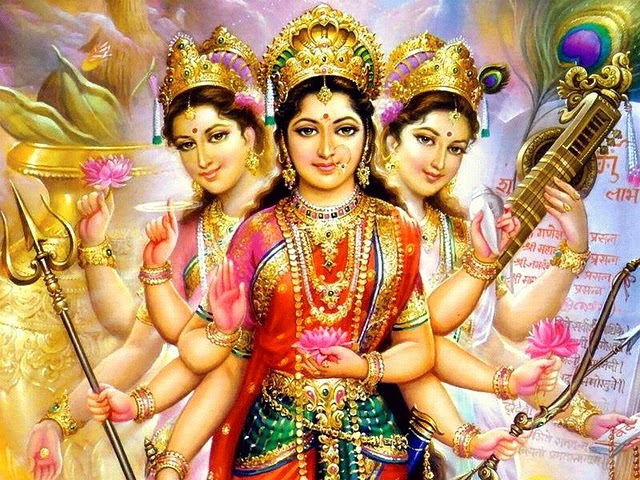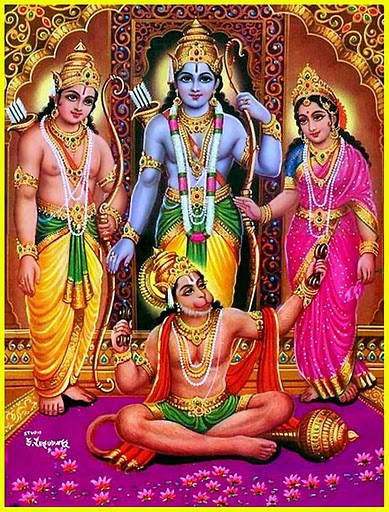
Hindu temple is a house of worship for the followers of Hinduism. They are usually dedicated to any one prime deity or multiple of them. They inherited rich & ancient rituals & customs which have been kept intact till date. Since ages, the architectural part has been given prime importance keeping in mind the religious and spiritual activities to be followed at these sacred places. they not only serve as pilgrim centers but also has hot tourist destinations simply because of their intricate architectural designs & patterns. The legends related to them make them all the more happening in every way.
Most of these temples were constructed as per the agama shastras. Vasstu Shastra is given due importance which is the science of aesthetic & auspicious designs. The common sight of most of the Hindu religious temples is the presence of the elaborate idols of the deity. Since the Vedic age, the milieu of the temple was equally kept in high esteem. Roch cut architecture; cave style temples carved out rocks are examples. Elaborate sculptures & paintings would adorn the walls of these temples. The spiritual temples are found in abundance throughout the country. The major centers come under these two prominent categories:

Char Dham
In Hinduism, the Char Dham is considered a vital Hindu pilgrimage circuit in the Indian Himalayas. The picture perfect location in the Garhwal section of the state of Uttarakhand, consists of four sites - Yamunotri, Gangotri, Kedarnath and Badrinath. All the site in the circuit has the backing of an autonomous history. They are seen as hot destinations because of their beautiful locales as well as pilgrim centers. The Char Dham has always been seen as a source to come in contact with the divine power. The mystical journey has been mentioned as 'Kedarkhand' in ancient Hindu scriptures.
According to Hindu scriptures, all these holy centers are very sacred of all pilgrimages. One gets rid of all his sins when making a trip to any of these sacred places. It is believed that he gets free from worldly clutches, & thus, is blessed with Moksha. The beautiful placing of the spiritual Char Dham is seen as a meeting point for heaven and earth. The journey towards Chardham must be started from left to right - i.e. beginning with Yamunotri, then moving on to Gangotri, Kedarnath before finally ending the journey at Badrinath. This particular adoption of the route actually follows the Hindu tradition of parikrama or clockwise circulation.
Badrinath Dham
The Badrinath is a Hindu holy town in Uttaranchal, India and considered to be the most important of the four sites in India's Chardham pilgrimage. It is an important destination on the sacred itinerary of every devout Hindu. It has been emphasized in the ancient scriptures that there are many sacred spots of pilgrimage in the Earth, Heaven and the Nether world, but there has been none equal to Badri nor there shall be. The significance of this place is that it is considered to be the seat of the God Vishnu in his aspect of Badrinarayana. The prime sites in this area are Badrinath Temple, Tapt Kund, Brahma Kapal, Charanpaduka, Sheshnetra, Neelkantha. Another important religious attraction at Badrinath is the Badrinath Temple which is considered as the abode of Lord Vishnu and is situated at 3,124 meters above sea level in the Himalayas. The temple has three parts - Garbha Grih (The Sanctum Sanctorum), Darshan Mandap (for pujas) and Sabha Mandap (for devotees to assemble). At the backdrop is the Neelkanth mountain peak situated between twin peaks named Nar and Narayan. The Badrinath temple was built by the Gharwal kings.
This temple is more than two centuries old. It is believed that Lord Vishnu came to the area, called 'Badri Van', or the berry garden, to meditate after Narad rebuked the Lord for being immersed in worldly pleasures. The main idol in the temple is that of Lord Vishnu in the form of a black stone. Lord Vishnu is in a meditative stance with both hands on his lap. The sacred river Alaknanda flows by the temple. The holy river Alaknanda is fed by the Badrinath glaciers and the Holy Ganges. The temple of Badrinathji is five meters high, it is built in the form of a cone with a small coupla of a gilt bull and spire. The temple opens every year in the month of April-May and closes for winters in the third week of November. At one time the spot was covered with wild berries ("badris") and was famous as the "Badri Van" (the garden of wild berries). Facing the temple at the bank of Alaknanda River is "Tapt Kund"a hot water spring, a bath in this spring is a very refreshing experience for the travelers. It is believed to be a reliever from many diseases.
Places of Interest:
The nearby places of interest are the Panch Badri namely :
Yog Dhyan Badri:
The temple of Yog dhyan Badri, one of the five Badris. It is located at Pandukeshwar. The location is just 24 km short from Badrinath on the Rishikesh Badrinath highway. The image, worshipped here is that of the Lord in a meditative posture. It is believed that the Pandavas settled here after handing over Hastinapur to king Parikshit.
Bhavishya Badri:
Bhavishya Badri is located at Subain near Tapovan, about 17kms. east of Joshimath on Joshimath - Lata Malari route. Pilgrims have to trek beyond Tapovan, up the Dhauliganga river. The temple of Bhavishya Badri is at an elevation 3641mts., and is surrounded by dense forests. It is believed that one day the route to Badrinath temple will become inaccessible and then Lord Badrinath will be worshipped here. Hence this place is rightly called Bhavishya Badri meaning the future Badri.
Adi Badri:
Adi Badri is believed to be the ancient aboard of Bhagwan Badrinath. The Idol worshiped here is a black stone depicting Lord Vishnu. This place is approachable from Karnprayag by a motorable road on the way to Ranikhet. There are 16 small ancient temples, 7 among them belong to the late Gupta period. The credit for building these temples is given to Shankaracharya. The main temple of Lord Narayan is situated on a raised platform in the pyramidal form where the idol is enshrined. The idol of Lord Vishnu is a meter high. Adi Badri is considered as the emerging source of river Saraswati.
Vriddha Badri
The idol placed here is known as vriddha old or the first Badri and the temple remains open throughout the year. It is situated at an altitude of 1380mts. and at a distance of 7kms. from Joshimath. The idol of Badrinath was enshrined and worshiped here before the advent of Adi Guru Shankaracharya.
Things to remember:
• The Badrinath temple remains closed during winter and is open from April to November
• One may carry light woolen between June - September
• One should carry heavy woolen between October - November
• Languages spoken - Hindi, English and Garwali
The other nearby places to visit are :
• Panchshilas
• Panchdharas
• Mata murty temple
• Mana Village
• Vasudhara
• Bhim Pul
• Vyas GutaYogadhyan Badri
• Alkapuri
• Satopnath Swargarohan Parbat
 The Gangotri Temple
The Gangotri TempleGangotri, is known as the source of river Ganges and is believed that Goddess Ganga resides here. Gangotri is one of the four sites of Char Dhaam. The physical source of the river is at Gaumukh, this place is 18 km ahead. Pilgrims do trek this path to offer prayer to the Goddess at this holy spot. At the source the river is called Bhagirathi and from Devprayag it is called Ganga here it meets river Alaknanda. The origin of the holy river Ganges is at Gaumukh. The place is approachable after 18 km trek along the Gangotri glacier. According to popular legends, Goddess Ganga took the form of a river in order to wash off the sins committed by the King Bhagirath's predecessors. There is a submerged Shivling in the river. It is believed that Lord Shiva sat here and tamed the gushing flow of river Ganges in his matted locks
The temple dedicated to Lord Ganges is situated at the right bank of the river Bhagirathi. The temple has a height of 3042 mts. The temple was constructed by a Gorkha commander called Amar Singh in the 18th century. The peak season when lakhs of pilgrims visit Gangotri is between May to October. By November Gangotri is covered by snow and hence becomes inaccessible. It is believed that by winter Goddess retreats to Mukhba her winter abode, this place is 12 km downstream. The physical surrounding of this holy spot is such that it proves to be an ideal trekking spot for sport enthusiasts. The other nearby places of interest are -
Surya Kund A place where pilgrims offer their prayers to the Hindu Sun God
Vishnu Kund : : A holy place of worship where pilgrims offer their prayers to Lord Vishnu-the preserver
Brahma Kund : A holy spot where the pilgrims offer their auspicious prayers to Lord Brahma -the creator
The submerged Shivling : This is a site a pilgrim must visit. This site has immense visual value. It speaks a silent language of God's power. It is believed that Lord Shiva sat here to tame the gushing force of the river Ganges in his locking mates.
Nandavan Tapovan : This site is ideal for excursion. Nandan Tapovan is situated at distance of 6 Km from Gangotri. A trek along the Gangotri glacier leads to this beautiful place which is really a visual treat. One can see the beautiful Shivalik peak from here.
Uttarkashi : Uttarkashi is another place to visit. It is situated at a distance of 99km from Gangotri. This place is accessible after a long trek along the Gangotri glacier. situated at an elevation of 1,150 mts. above sea level on the bank of river Bhagirathi. There are some important temples to visit in Uttarkashi like -
• Vishwanath temple
• Ekadash Rudra temple
• Gyaneshwar temple
• Kuteti Devi Temple
Kedar Tal : It is a beautiful lake, 4425 mts. above sea level. This lake is placed at the exotic backdrop of the Thalaiyasagar peak. This place is accessible after rough mountain trekking. Kedartal serves as a base camp for trekking to the other surrounding mountain peaks.
Gaumukh : It is the mouth of the sacred Gangs river. Pilgrims reach the spot after a long trek from gangotri. The pilgrim offer their prayers to the Goddess and take a holy dip in the chilling water of the Ganges.
Bhairon Ghati : This spot is surrounded by thick forest and is situated towards Uttarkashi. This place is famous for the famous temple of Bhairo Nath.
Harsil : This location is situated in the mountain district of Uttarkashi. Sat Tal is a nearby tourist destination. Harsil is famous for it's scenic beauty and for delicious apples.
Gangani : This place is noted for it's splendid landscape, thermal springs and peaceful surroundings. Bhatwari a small upcoming town 12 km away from Gangani is a must visit.
Maneri : Maneri is a spot that is worth visiting for its beautiful surroundings, the nearby lake and also the dam across the river Bhagirathi.
Dayara Bugyal : Dayara Bugyal is famous for its magnificent ski slopes spread over an area of 28 sq.km. Dayara is approachable from Bhatwari after a 6km trek. Bhatwari is 27 km from Uttarkashi. The famous Shashang temple is an attraction while trekking. This spot is famous for it's splendid scenic beauty. The spot is situated at a height of 3048 meters.
Dodi Tal : This sparkling lake is situated at an elevation of 2286 mts. The lake is surrounded by dense forests. The famous himalayan fresh water fish are found here in abundance. This site is a must visit for auatic life lovers.
Nachiketa Tal : This spot is famous for its beautiful scenery. A small temple along the lake is also very famous. This spot is approachable after a pleasant trek through a rich green forest.
Kedar Tal : It is a beautiful lake, 4425 mts. above sea level. This lake is placed at the exotic backdrop of the Thalaiyasagar peak. This place is accessible after rough mountain trekking. Kedartal serves as a base camp for trekking to the other surrounding mountain peaks.
Tehri : This spot is famous for a giant hydel project. This beautiful spot lies in the confluence of the Bhagirathi and Bhilanga river. This spot is generally visited by tourists who like to travel and venture more into this beautiful pilgrim spot after paying homage at Gangaotri.
Narendranagar : From this spot one can view the beautiful scenic beauty of Ganga valley of Rishikesh and the plains of Haridwar. Narendranagar is the new capital of erstwhile Tehri
• The main season to visit Gangotri is April to November.
• One may carry light woolen in summer.
• One should carry very heavy woolen in winter.
• The colloquial language is Hindi, Garhwali & English.
• The nearest airport is Jolly Grant, 226 km from Dehradun.
• The nearest railway station is Rishikesh.
• The road route is well connected Well connected to Rishikesh, Haridwar, Dehradun and Delhi.
• A number of ashrams, dharamshalas, guest houses, private guest houses serve as a convenient stay.
• The local eating joints dhabas are an ideal place to eat. They serve tasty vegetarian food. Non vegetarian food and liqour is prohibited.
 Kedarnath Dham
Kedarnath DhamKedarnath is a Hindu holy town located in the the Indian state of Uttaranchal. The place is located at an altitude of 3,584 m and at the origin of the river Mandakini, the temple of Kedarnath is the most venerated place for Hindu pilgrims. Amidst the dramatic mountain scapes of the majestic Kedarnath range stands one of the twelve 'Jyotirlingas' of Kedar or Lord Shiva. Kedarnath hosts one of the holiest Hindu temples and is a popular destination for Hindu pilgrims from all over the world. The place is accessible after a steep 13 km trek over a paved path from Gaurikund. Rishikesh, Haridwar, Dehradun are well connected to Gaurikund by road. There are different places on the route like- Rambara, Janglechatti and Garurchatti, where one can spend some time while trekking or can even spend a night as a halting station. There is a high and beautiful cascading waterfall just one kilometer before Rambara. The main attraction at Kedarnath is the Kedarnath Jyotirlinga Temple, which is one of the Panch Kendras located in the Himalayas, at the source of the Mandakani river. It is about 120000 feet above the sea level. One can get a glimpse of the God when traveling by foot. The picture perfect setting with breathtaking scenic beauty transforms it in a heaven. Perpetually covered with snow, the place is best accessible from May to October except the Monsoon.
The credit for the construction of this heavenly temple is given to the Pandavas. The entrance starts with the statue of Nandi, the divine bull of Shiva. Fine & detailed carvings exhibiting images can be seen on the walls inside. The shiva lingam is in the form of a pyramid. The Kedar dome peak is located exactly behind the temple. It can be viewed from great distance as well. The temple is located on the Rudra Himalaya range, also known as the Pancha Parvata. It is believed that four of the Pandavas died on one of the peaks, Swargarohini.
The holy statue of Shiva is carried from Garhwal (Kedarkhand) to Ukhnimath in November which is then restablished at Kedarnath in the first week of May. The doors of the temple are now thrown open to pilgrims.
Mythology states that the deity of Kedarnath temple is identified with the rump of a bull. Shiva had camouflaged himself while eluding the Pandavas, who had come to repent for killing their kith and kin, during the battle of Kurukshetra. Shiva dived into the ground, thus, leaving a hump on the surface. This very conical projection is worshipped till now.
The temple is open only during the months of May to October, due to heavy snowfall and extreme cold weather during winter. The origin of this revered temple is mentioned in the great epic-Mahabharata. According to the saying it is believed that the Pandavas came to Lord Shiva to seek blessings to atone their sins after the battle of Mahabharata. Lord Shiva evaded them continuously and took refuge in Kedarnath in the form of a Bull. On being chased, Lord Shiva left his hump behind. This conical protusion is worshiped in the temple. During the winters, the shrine is submerged in snow and hence is closed. The ideal time to visit is between May to October. The remaining portions of Lord Shiva are worshiped at four other places like -
• The arms {baahu} - at Tungnath
• The mouth {mukh} - at Rudranath
• The hair {jata} - at Kapleshwar
• The best season to visit is May to October except monsoon
• One may carry light woolens in summer and must carry heavy woolens in winter
• The colloquial Language in use are Hindi, Garhwali and English
• The nearest airport is Jolly Grant, Dehradun (251 kms.)
• The nearest railway stations are Rishikesh (234 kms.) Kotdwar (260 kms.)
• The walking route starts from Gaurikund which is connected by road to Rishikesh, Kotdwar, Dehradun, Haridwar and other important hill stations of Garhwal and Kumaon region
• There are halting stations like Dharamshalas, Ashrams, Cottages and Tourist Rest House for comfortable stay
There are some important fairs that are organized at Kedarnath anually like :
• Nagnath (Feb.)
• Sardotsava, Joshimath (Feb.)
• Sardotsava Chamoli, Gopeshwar (Feb. - Mar.)
• Shivaratri, Gopeshwar (Feb. - Mar.)
• Nanda Devi, Nauti (Mar.)
• Maithan, Maithan (Mar.)
• Bishwat Sankranti, Karnaprayag
• Nandprayag (April)
• Bikhot, Agastyamuni (April)
• Nautha, Adi Badri (May)
• Kaviltha, Kaviltha (Jun.)
• Naumi, Jasoli Haryali (Aug.)
• Bhaikhal, Mela, Bhaikhaltal (Aug.)
 The Yamunotri Temple
The Yamunotri TempleThe shrine of Yamunotri is situated in the opposite direction of Gangotri. Yamunotri is the source of river yamuna which originates from the Champasar Glacier. This spot is not generally visited by pilgrims as it is not easy to approach the place. The shrine is placed at an elevation of 3235 meters. Dharasu is the strategic point from where the road bifurcates to Yamunotri and Gangotri, this place is between Rishikesh- Uttarkashi. The holy shrine of Yamunotri is one of the four Dhams of Uttarakhand. At an altitude of 4421 meters is situated the source of Yamuna, this is 1 km ahead of the shrine. Reaching the source is very difficult hence the pilgrims offer their prayers in the shrine itself. The pilgrims take a refreshing bath in the hot water springs situated nearby the temple.
This bath in the water spring is very relieving after a long and tedious trek. The most popular hot water spring is the Surya Kund. This hot water spring is used to prepare the prashad of the temple by tying rice and potato in cloth and dipping it in the hot water spring. In Surya Kund the temperature of the water is 190°F. The legends say that the temple was built by Maharani Gularia of Jaipur in the 19th century. The shrine is dedicated to Lord Yamuna and is represented in the form of a silver idol. It is believed that a highly worshipped hermit, Asit Muni resided here. Goddess Yamuna is the daughter of Lord Surya and Sangya, the Goddess of consciousness. Goddess Yamuna is the sister of Lord Yama, the God of death. It is hence believed that anyone taking a bath in the river Yamuna escapes a painful death. Before entering the temple the pilgrims worship a rock pillar called Divya Shilla. The main season to visit yamunotri is during summers.
The other places to visit apart from the shrine are:
Surya Kund : This is a hot water spring. A very interesting fact about this spring is that the main prashad of the temple is prepared in the Surya Kund. It is very refreshing for the pilgrims to take a bath in Surya Kund.
Divya Shilla : Divya Shilla is a rock pillar situated before the temple. The devotees offer their prayers here before visiting the main shrine of Goddess Yamuna.
Sayanachatti : This is a beautiful scenic spot situated on the banks of river Yamuna. This place is 29 km from Barkot.
Jankichatti : This place is known for it's thermal springs. The pilgrims take a refreshing bath here after their long treks.
Hanumanchatti : This spot is the confluence of Hanuman Ganga and river Yamuna. The trek to Dodi Tal starts from here.
• One should carry light woolens during summer.
• One should carry heavy woolens in winters.
• The colloquial language is Hindi, Garhwali, English.
• The nearest airport is Jolly Grant which is 18 kms from Rishikesh.
• The nearest railway station is Rishikesh.
• Dharamshalas are the main source of accommodation.
• The local dhabas are the main eating out joints.
• Alcohol and non vegetarian food is prohibited in Yamunotri.





 Hindu temple is a house of worship for the followers of Hinduism. They are usually dedicated to any one prime deity or multiple of them. They inherited rich & ancient rituals & customs which have been kept intact till date. Since ages, the architectural part has been given prime importance keeping in mind the religious and spiritual activities to be followed at these sacred places. they not only serve as pilgrim centers but also has hot tourist destinations simply because of their intricate architectural designs & patterns. The legends related to them make them all the more happening in every way.
Hindu temple is a house of worship for the followers of Hinduism. They are usually dedicated to any one prime deity or multiple of them. They inherited rich & ancient rituals & customs which have been kept intact till date. Since ages, the architectural part has been given prime importance keeping in mind the religious and spiritual activities to be followed at these sacred places. they not only serve as pilgrim centers but also has hot tourist destinations simply because of their intricate architectural designs & patterns. The legends related to them make them all the more happening in every way. Char Dham
Char Dham The Gangotri Temple
The Gangotri Temple Kedarnath Dham
Kedarnath Dham The Yamunotri Temple
The Yamunotri Temple








